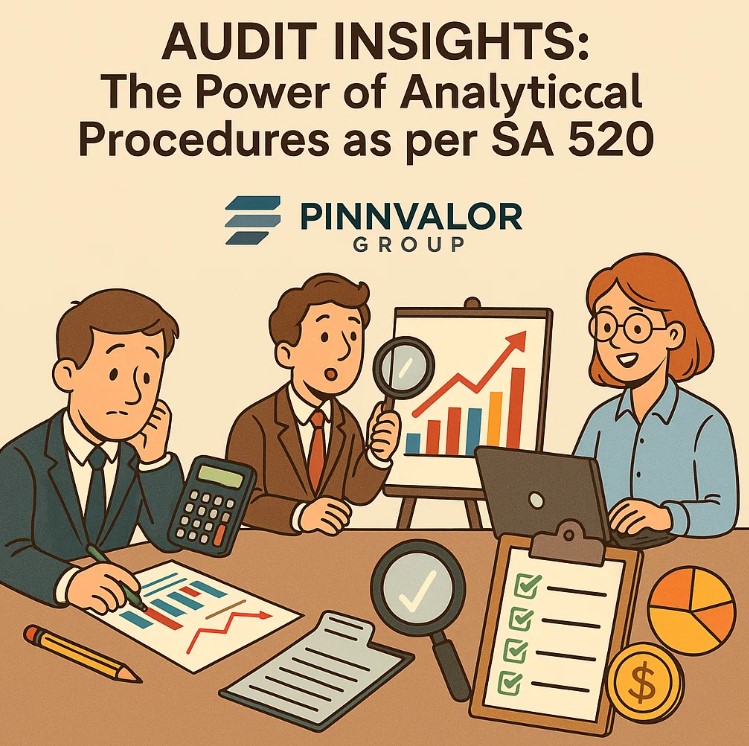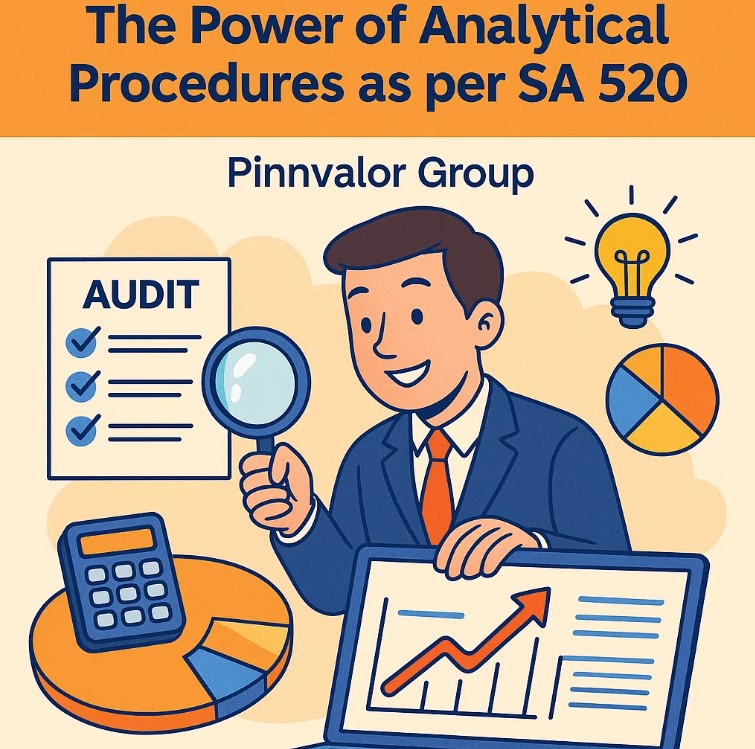
Audit Insights: The Power of Analytical Procedures as per SA 520
Auditing is more than just checking numbers — it's about understanding trends, identifying anomalies, and assessing risks. One of the most insightful tools available to auditors is the use of analytical procedures, as detailed in Standard on Auditing (SA) 520. These procedures are not just optional techniques; they are integral parts of the audit process, used both before and after the core audit work.
Ever wondered how top auditors detect financial red flags early? It starts with SA 520.
Great audits don’t just verify — they analyze. SA 520 empowers auditors to spot red flags and trends with precision.
📘 What is SA 520?
SA 520 – Analytical Procedures is issued by the Institute of Chartered Accountants of India (ICAI) and outlines the auditor's responsibility regarding the use of analytical procedures during an audit. It defines when and how these procedures should be applied and what outcomes auditors should expect from them.
📊 What are Analytical Procedures?
Analytical procedures involve evaluating financial and non-financial information by studying plausible relationships among both financial and non-financial data. This may also include investigating identified fluctuations or inconsistent relationships that are not in line with other relevant information.
🔹 Examples of Analytical Procedures:
- Trend analysis – comparing current period data with prior periods.
- Ratio analysis – assessing liquidity, profitability, and efficiency through key financial ratios.
- Reasonableness tests – checking the logical consistency of data (e.g., interest expense vs. loan balance).
⏱️ When are Analytical Procedures Used?
According to SA 520, analytical procedures are used at three key stages:
1. Planning Stage (Before Audit)
- Helps understand the entity and its environment.
- Assists in identifying areas of potential risk and planning further audit procedures.
- Example: Identifying unusual growth in revenue with no corresponding increase in cost.
2. Substantive Testing (During Audit)
- Used as substantive procedures to obtain audit evidence.
- Generally more effective when performed using data over several periods or benchmarks.
3. Completion Stage (After Audit)
- Used as an overall review of the financial statements.
- Ensures consistency of financial statements with the auditor's understanding of the entity.
- Example: Performing final ratio analysis to verify if ratios align with expected outcomes.
🎯 Objectives of Analytical Procedures
The primary objectives of SA 520 are to:
- Enhance the auditor’s understanding of the entity.
- Identify areas of potential misstatements.
- Obtain sufficient and appropriate audit evidence.
- Assist in forming an overall conclusion on financial statements.

🧩 Key Considerations in Applying SA 520
- Reliability of data: The effectiveness of analytical procedures depends on the reliability of the data used.
- Expected relationships: There should be plausible and predictable relationships among data.
- Degree of precision: The more precise the expectation, the better the procedure’s usefulness.
- Correlation strength: The stronger the correlation, the more effective the procedure.
✅ Benefits of Analytical Procedures
- Time and cost-efficient audit techniques.
- Early identification of risk areas.
- Effective cross-verification of financial information.
- Supports decision-making and professional judgment.
⚠️ Challenges & Limitations
- May not detect all types of material misstatements, especially if data quality is poor.
- Heavily reliant on professional skepticism and judgment.
- Analytical tools are only as good as the information they analyze.
📌 Conclusion
Analytical procedures under SA 520 are powerful tools that give auditors a broad and deep view of an entity's financial health. When used effectively, before and after the audit process, they can enhance the quality of audit evidence, improve efficiency, and sharpen professional judgment. In today’s data-driven audit environment, mastering SA 520 isn’t just an advantage — it’s a necessity.
